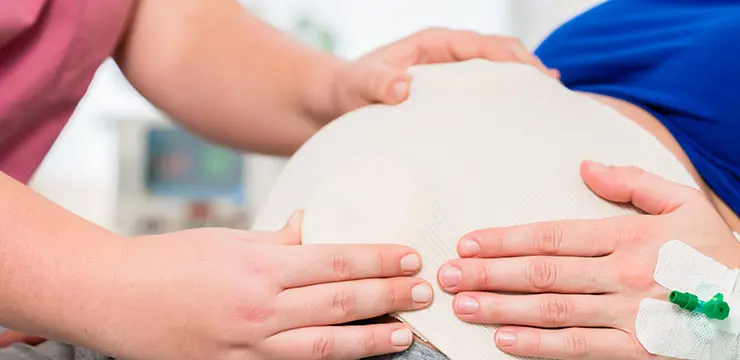Reduction in severe perineal tearing when two midwives are present during childbirth

This article was originally published as a press release by Lund University.
There is currently a lack of evidence for many of the preventive methods used to reduce perineal tearing during childbirth.
“Although severe perineal tears are rare, they can lead to significant and sometimes lifelong consequences for the women. Symptoms include pain, incontinence, problems with sexual health and other complications”, says Christine Rubertsson, professor at Lund University, midwife at Skåne University Hospital and principal investigator for the study.
A total of 4 264 women who were planning their first vaginal birth consented to participate in the study. During the births, 3 750 women were randomly assigned to get support and care from either one or two midwives. Of the 1 546 who gave birth with two midwives, 3.9% suffered from perineal tears compared to 5.7% of the 1 513 women who received standard care from one midwife. There were no other differences between the groups regarding tears or the newborns health following the birth.
“Many maternity units have already adopted this clinical practice of collegial assistance with two midwives, and this study provides evidence for the reduction in severe in perineal trauma”, says Malin Edqvist, midwife at the Karolinska University Hospital and researcher at Karolinska Institute, who led the study during her time as a postdoc at Lund University.
The women who participated in the study also responded to two questionnaires; one month and one year after the birth. The questions included birth experiences and the care they received, as well as their physical, mental and sexual health.
“As many as 63% were included in the study, which is a high number. Our understanding is that the study has been important for the women, but also for midwives, particularly as midwives and other health professionals have a heavy workload”, says Christine Rubertsson.
The researchers have continued to follow the participants in the study, and the next step is to investigate the postpartum care and women’s quality of life and pelvic floor symptoms.
“It is also important to analyse women’s and midwives experiences of this clinical practise to further develop collegial assistance.
There are many research questions around women’s health that needs to be addressed, particularly when it comes to pelvic floor health. Our research is one contribution”, concludes Malin Edqvist.
In this study the primary focus of collegial assistance was to reduce SPT which is a relatively new practice in the Scandinavian countries. However, a second midwife assisting the birth is common in other countries like Australia and the UK, but not with the primary purpose to reduce SPT. This means that in these countries, without excessive measures, the purpose of collegial assistance could be changed to include the prevention of severe perineal trauma.

